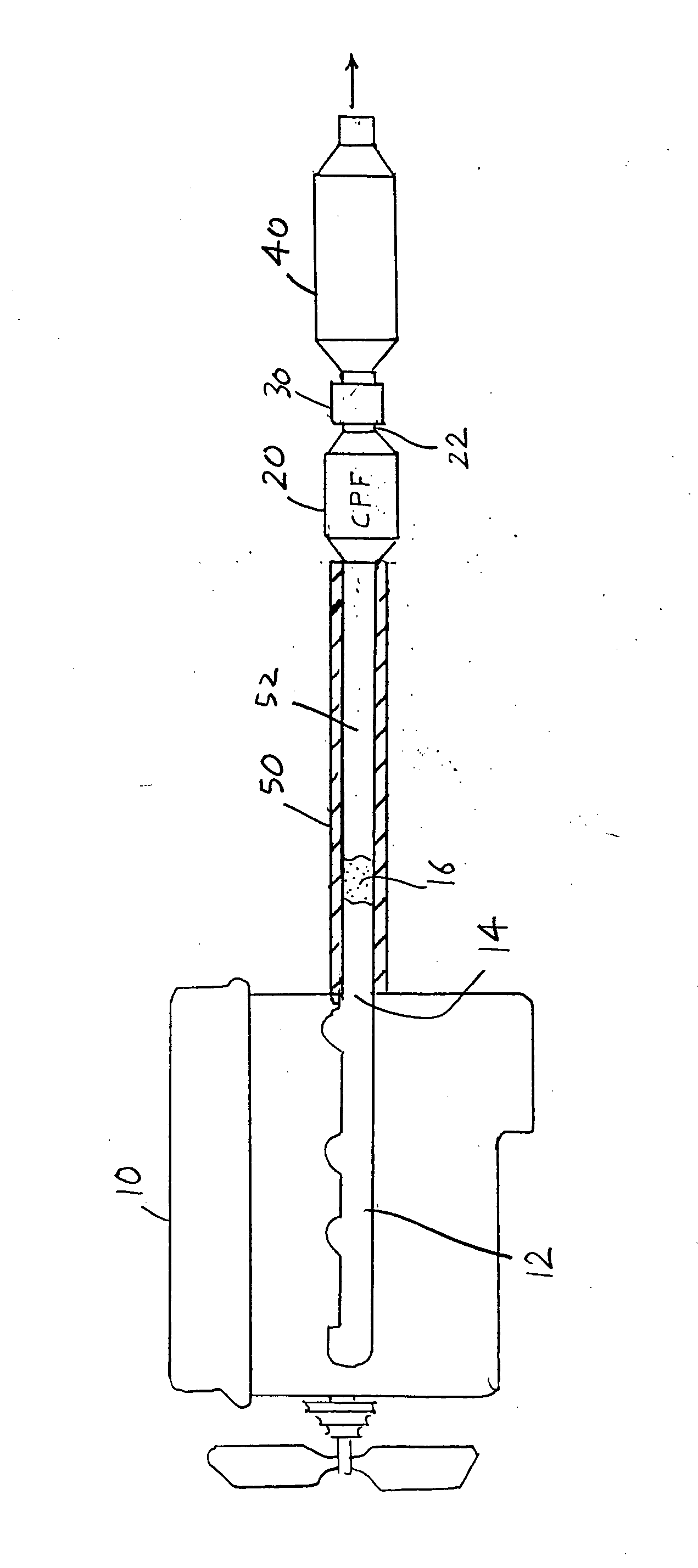Upgraded emissions reduction system
- Summary
- Abstract
- Description
- Claims
- Application Information
AI Technical Summary
Benefits of technology
Problems solved by technology
Method used
Image
Examples
Embodiment Construction
[0008] The FIGURE illustrates a diesel engine 10 with an exhaust manifold 12 that combines the exhaust from all engine cylinders and passes the exhaust gases 16 from the manifold outlet 14 through a conduit 52. The exhaust gases pass through a CPF (catalyzed particulate filter) 20, through an ammonia injection station 30, and through a catalytic converter 40. The catalytic converter is preferably a NOxMASTER SCR / DOC catalytic converter. The catalyst in the catalytic converter helps react ammonia (NH3) with nitrogen oxides in the exhaust gasses. It also reacts oxygen with carbon and carbon monoxide in the exhaust gases to reduce unburned carbon particles and produce carbon dioxide.
[0009] Applicant's experiments show that ammonia (NH3) and ammonia components (NH2 and / or NH+H) react much faster and more completely with nitrogen dioxide (NO2) than with nitric oxide (NO). Applicant also finds that the CPF (catalyzed particulate filter) 20, which is used to reduce soot in diesel engine e...
PUM
 Login to View More
Login to View More Abstract
Description
Claims
Application Information
 Login to View More
Login to View More - R&D
- Intellectual Property
- Life Sciences
- Materials
- Tech Scout
- Unparalleled Data Quality
- Higher Quality Content
- 60% Fewer Hallucinations
Browse by: Latest US Patents, China's latest patents, Technical Efficacy Thesaurus, Application Domain, Technology Topic, Popular Technical Reports.
© 2025 PatSnap. All rights reserved.Legal|Privacy policy|Modern Slavery Act Transparency Statement|Sitemap|About US| Contact US: help@patsnap.com


